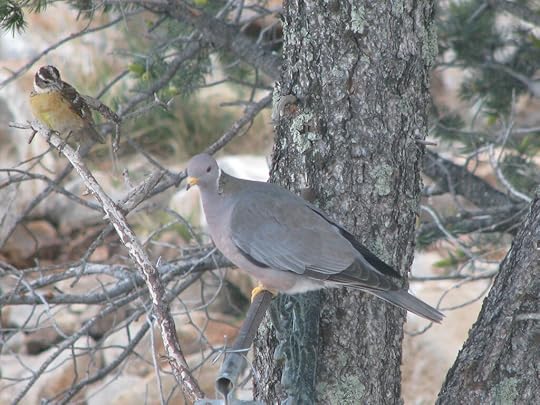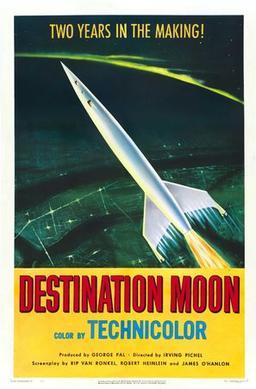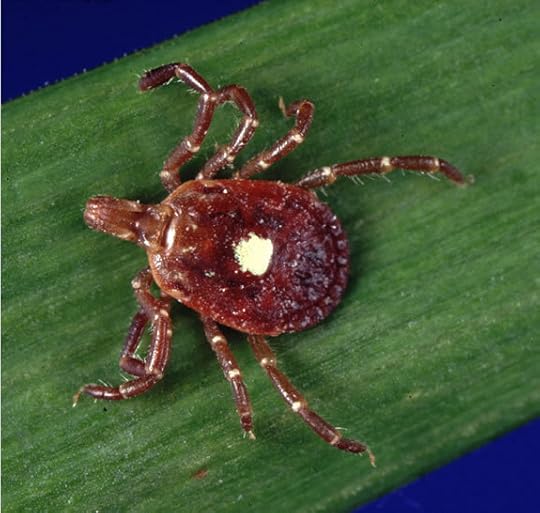Kate Rauner's Blog, page 15
August 12, 2022
Why Did Birds Survive While Dinosaurs Didn’t? #dinosaur #extinction #asteroid #birds
For me, it’s never been “why did they die?” but “why did any survive?“
66 million years ago, a massive asteroid at least 6 miles (10 km) across slammed into Earth. Species of mammals, birds, lizards, insects, pterosaurs, fish, sharks, mollusks, even some planktons were exterminated. No land-dwelling terrapod species (four-legged critter) larger than a medium-sized dog survived the catastrophe. That, of course, meant the end of dinosaurs I’ve admired since childhood.
Debris thrown into the atmosphere returned to Earth, the friction turning the air into an oven and sparking forest fires as it landed all over the world. Then the intensity of the heat pulse gave way to a prolonged impact winter, the sky blotted out by soot and ash as temperatures fell. All told, more than 75 percent of species known from the end of the Cretaceous period, 66 million years ago, didn’t make it to the following Paleogene period. Smithsonian
But not all dinosaurs were doomed. It’s a wonderful fact that, in addition to our own mousey-predecessors, avian dinosaurs survived. Not all of them. Fantastic feathered fliers with teeth in their mouths didn’t make it. Only beaked birds with powerful gizzards did – yes, birds. Because the birds in your backyard or perched on your windowsill are the posterity of dinosaurs.
 This Band Tailed Pigeon’s ancestors survived
This Band Tailed Pigeon’s ancestors survivedI suppose I can imagine how enough ocean-dwellers escaped into the depths to bring marine life back, but how did anything survive on land? I’m not surprised the 165 million year reign of the dinosaur (non-avian, that is) ended. I’m surprised anything survived.
Okay, maybe groups of individual creatures were lucky enough to be nesting underground (my ancestors) or tucked away in deep canyons or something like that… but after the initial shock waves and fire storms, the world turned to winter. Then what?
It’s unlikely that one single trait determined the fate of all these species [but] beaks may have been some birds’ ace. Beaked birds [with those gizzards mentioned above] were able to feed on the seeds of the destroyed forests and wait out the decades until vegetation began to return. (More from the Smithsonian and a journal article, Dental Disparity and Ecological Stability in Bird-like Dinosaurs prior to the End-Cretaceous Mass Extinction.)
Wow! Really? For decades? Seeds are an environmental factor that might unite small mammals with beaked non-avian dinosaurs. I like how that fits together. And there may not have been a lot of competition for those remaining morsels. Pioneer plants do begin growing on fresh lava flows as soon as they cool, and others are adapted to fire, and buried seeds and spores can snuggle safely away for many years, so, life on Earth wasn’t finished.
Whatever the details… birds survived. I hope we humans are wise enough to allow them to share the planet with us for eons to come.
Scientists would love to uncover fossils from immediately after the impact to learn more. I’ll be watching for the news when they do.
August 10, 2022
Adventure in Space with Winnie Bravo, Space Pilot #sciencefiction

Winnie Bravo, newly minted pilot, joins veteran Bertram clearing space junk from Earth orbit.
She’s brash, reckless, and more than a little annoying as she sets out to prove herself. Capturing a stealth probe that’s destroying satellites seems the perfect way to demonstrate her talents, but the mysterious craft escapes. Now, someone at her corporation’s lunar base is willing to kill to stop her.
She barely escapes with her life and must track down the lunar spy before they strike again.
If you love rollicking adventures, you won’t be able to put Winnie’s story down. Humanity’s future in space depends on brave men and women, and it may help if they’re a little crazy. Head into orbit today.
August 6, 2022
Liquid Mirror Telescope, Thanks to Rotating Film of Mercury #telescope #astronomy
 How’s that work? Schematic representation of the forces acting on an object situated on a sloping surface. The red arrow represents the force of gravity. The green arrow represents the normal force. Since those two forces are not aligned in this situation, they do not entirely cancel each other. The resultant force is directed down the slope. In this image the shape is a cross section of a parabolic dish. When the dish is rotating then there is one rotation rate that exactly matches the parabolic shape. If the rotation rate matches the shape, then an object that is co-rotating with the disk will neither climb up the slope, nor slide down the slope.
How’s that work? Schematic representation of the forces acting on an object situated on a sloping surface. The red arrow represents the force of gravity. The green arrow represents the normal force. Since those two forces are not aligned in this situation, they do not entirely cancel each other. The resultant force is directed down the slope. In this image the shape is a cross section of a parabolic dish. When the dish is rotating then there is one rotation rate that exactly matches the parabolic shape. If the rotation rate matches the shape, then an object that is co-rotating with the disk will neither climb up the slope, nor slide down the slope.If you’ve been a Do-It-Yourself sort of nerd, you may have ground down and polished a telescope mirror. Polished… and polished… and polished. But getting it perfect is necessary, even more so for professional astronomers. So this piece about a liquid mirror caught my eye:
The International Liquid Mirror Telescope (ILMT) in the central Himalayas… houses a four-meter rotating mirror coated with a thin film of liquid mercury. Rotating once every eight seconds, the mirror floats on a film of compressed air about 10 microns thick… Liquid-mirror telescopes take advantage of the fact that the surface of a rotating liquid naturally takes on a parabolic shape, which is ideal for focusing light. science.ubc.ca
Good luck guys studying your transient or variable objects such as supernovae, gravitational lenses, space debris and asteroids.
Wow, what a concept. Of course, there’s lots of fancy optics too with just as much of a wow-factor. And lots of organizations are involved:
The ILMT collaboration includes researchers at the Aryabhatta Research Institute of Observational Sciences, and the Indian Space Research Organization, the University of Liège and the Royal Observatory of Belgium in Belgium, Poznan Observatory in Poland, the Ulugh Beg Astronomical Institute of the Uzbek Academy of Sciences and National University of Uzbekistan in Uzbekistan, the University of British Columbia, Laval University, the University of Montreal, the University of Toronto, York University and the University of Victoria in Canada.
The telescope was designed and built by the Advanced Mechanical and Optical Systems and the Centre Spatial de Liège in Belgium.
That’s what I call an international effort.
August 3, 2022
Corporate Space Industry is Here #scifi #sciencefiction #SpaceX #satellite
 333 seconds-exposure image from Blanco 4-meter telescope at the CTIO showing the light pollution of Starlink Satellites
333 seconds-exposure image from Blanco 4-meter telescope at the CTIO showing the light pollution of Starlink SatellitesAugust is upon us, the end of summer is coming, and consider this: Space X just broke its own record for most launches in a year, and it only took them seven months to do it.
July 22nd “marks SpaceX’s 32nd successful launch of 2022, surpassing its previous record of 31 successful launches in 2021—and there’s still five months left in 2022. It’s a record for SpaceX and also for any launch provider.” Gizmodo
They launched more Starlink satellites into orbit, and now have about 2600 satellites in the “constellation” providing internet services. In just 20 years, Space X has become a huge player in space. While NASA, ESA, and other familiar organizations from my youth are still important, corporations are increasing their hold on Earth orbit.
As a science fiction writer, I can’t ignore the trend. Book 1 of my latest trilogy is released August 4, 2022. Winnie Bravo, Space Pilot. Not only do corporations rule space, but they’re trying to clean up the mess of space junk you and I (as humans on Earth) are creating today… and will continue on into the future.
Humanity’s future in space depends on audacious pilots, and it may help if they’re a bit crazy.Winnie Bravo is brash, reckless, and more than a little annoying as she sets out to prove herself, careening from adventure to adventure with her partner Bertie never far away.
In orbit, across the Moon, and on Earth, she pursues the truth about a nefarious probe and a scoundrel who will stop at nothing. What she discovers brings her closer to the truth than she bargained for, and may get her killed, or worse, fired.
If you love traveling to the future for rollicking adventures, you won’t be able to put Winnie’s story down. Binge on through, because the complete trilogy is being released between now and September 15th.

Special price during the launch! Only 99 cents for each kindle from now until Book 3 is released. Pre-order today so you don’t miss out.
July 21, 2022
Science Fiction Space Junk Adventure #scifibooks #kindlebook #sciencefiction
Where do story ideas come from? Real life! Space junk is a growing issue for NASA and the space industry… and private corporations are big players in orbit today. Both trends will continue, and that launched my new trilogy: Winnie Bravo, Space Pilot. I’ve been hunched over my computer, typing away, for about two years, and it’s time for lift-off.
First, let me share some of my inspiration with you.
How bad is space junk today? This animation from the European Space Agency is an eye-opener.

Here’s a fine assessment of the space junk situation:
There are quite a few concepts and proposals… but unfortunately, my unvarnished assessment is that they are all cockamamie and completely implausible…. There is, in fact, only one thing that we can do about the space junk problem, and that’s to stop making the problem worse. Bryan Dunning, Skeptoid
But, that doesn’t stop real-life companies from trying, one with help from Steve Wozniak, co-founder of Apple. And Bryan’s opinion encourages me: my story can’t be any more cockamamie that whatever The Woz proposes.
The Moon’s been no walk in the park for NASA astronauts so far. Check out this You Tube of their less graceful moments. Yes, those old pressure suits were stiff, which didn’t help, but what do you expect for a stroll on the Moon?
I couldn’t send my pilots to space without some creature comforts. My story started with Eighth Continent Enterprises, which built a resort and greenhouses on the Moon for guests and crew. Of course, that includes a vineyard! What to call the wine?

I borrowed from my own local winery. (Yes, there are wineries in New Mexico.) In my story, I mention Born in Space wine, which you’ll find at La Esperanza, a light crisp semi-sweet natural rose named in honor of a local copper mine. (Yes, if you want electricity and alternative energy, you need copper.) The town of Santa Rita was removed and a vast pit excavated under it. What was once the land’s surface now hovers high in mid-air. People born in Santa Rita say, they were born in space.

Order the Winnie Bravo, Space Pilot trilogy today! All three Kindles available for pre-order now, with print editions coming along as I complete them. (Dratted formatting takes time.)
Celebrate with a special low price during the launch! Each book only 99 cents thru September 15, 2022. Order today and lock that bargain in.
Winnie is brash, reckless, and more than a little annoying as she sets out to prove herself. Capturing a stealth probe that’s destroying satellites seems the perfect way to demonstrate her talents, but the mysterious craft escapes. Now, someone at her corporation’s lunar base is willing to kill to stop her.
If you love rollicking adventures, you won’t be able to put Winnie’s story down. Humanity’s future in space depends on brave men and women, and it may help if they’re a little crazy.
Click here now for Book 1, Lunar Base.
One more treat: A classic old movie on You Tube: Destination Moon – Vintage Science Fiction from 1950. REMASTERED Full movie, 90 minutes.
The film’s premise is that private industry will mobilize, finance, and manufacture the first spacecraft to the Moon, and that the U.S. government will be forced to purchase or lease the technology to remain the dominant power in space. Vintage Science Fiction
 Fair use of movie poster per Wikipedia
Fair use of movie poster per WikipediaHmm. Sound like today’s headlines? Look at that Star Wars scroll in the opening! Everything old is new again. The movie is too big to embed, so you’ll have to click on the link to enjoy the show:
June 14, 2022
Always Looking for a Good Book or New Author? Here Ya Go! #amreading #books
 Kate Rauner, scifi author
Kate Rauner, scifi authorHave you worn out your book bundle site, or maybe you’re on the hunt for your next good read?
Check out Awesome Gang. There’s even an interview with… me! Click here now, then cruise today’s selections on the “home” tab, or sign up for the free newsletter. Search by genre or author name – try me, Kate Rauner  and find a whole lot more too, in all genres.
and find a whole lot more too, in all genres.
Awesome Gang’s a new kid on the block – been around about a year. It’s founder, Ben Fox says:
As a reader I am incredibly frustrated with online book discovery. Goodreads does almost nothing to help authors meet readers or readers find amazing books (what are they doing with that huge team!!!). At the same time, Amazon sells books the same way they sell toothpaste (hint – it isn’t very exciting). I love wandering around bookstores and letting random books capture my attention. Nothing will ever replace the “bookstore experience”, but I want to reimagine book discovery online with a lot more serendipity and delight. Ben Fox
May 21, 2022
Launch into Space – No Rocket Needed #Rocket #space #spacecraft
Rockets aren’t the only way into space. How about running a payload around and around in an accelerator, building up speed, and then releasing it. Yes, throw a satellite into space. SpinLaunch had a successful flight, and there’s even video from the test vehicle:
I’ll let them tell it:
On Friday, April 22nd, we conducted Flight Test #8 where the engineering team tested our first optical camera payload in our Suborbital Accelerator. Check out this exclusive onboard footage that shows the perspective of the 3-meter flight test vehicle being launched into the atmosphere at more than a thousand miles per hour. Flying with the digital camera system onboard marks an important step towards integrating complex payloads into SpinLaunch flight test vehicles… an innovative new space technology company that has created an alternative method for putting 200 kilogram class satellites into low earth orbit. https://www.spinlaunch.com
Check it out! I have no idea how much electrical power this takes or whether companies will line up to use the service, but it looks like a less polluting and less risky way to launch a satellite. I’m just gonna sit here with my eyes wide and my jaw slack. Go to their web page for more cool images and info: https://www.spinlaunch.com/
May 14, 2022
Weed Grows in Lunar Soil (with some help) #NASA #botany #space
Fifty years ago, astronauts brought lunar regolith back to Earth. Now, University of Florida scientists have grown plants in tiny samples.
 Arabidopsis thaliana
, the species used for the study – though those were ground up for analysis before flowering like this one pictured. Generally considered a weed (it is found along the shoulders of roads and in disturbed land) it is often used in studies.
Arabidopsis thaliana
, the species used for the study – though those were ground up for analysis before flowering like this one pictured. Generally considered a weed (it is found along the shoulders of roads and in disturbed land) it is often used in studies.It was clear that the plants were not as robust as the control group plants growing in volcanic ash, and the plants were growing differently depending on which type of sample they were in. The plants grew more slowly and had stunted roots; additionally, some had stunted leaves and sported reddish pigmentation… the plants were indeed under stress and had reacted the way researchers have seen Arabidopsis respond to growth in other harsh environments, such as when soil has too much salt or heavy metals. NASA
Plants will grow in various sterile materials, or with no solid substrate at all, given proper nutrients and light, so my first thought was… now we see that lunar regolith is not poisonous. Good to know. But it wasn’t totally inert, either.
Will astronauts, or maybe colonists, grow food hydroponically? Aeroponically? Will the pumps, pipes, and valves needed for such systems be too much to transport and maintain compared to beds of local regolith? Even after whatever treatments may be needed to prepare the alien soil? Will bioreactors brewing microbes make more sense? I suspect all these possibilities will be tried at some point, but I can’t predict what method will win. Maybe bulk calories will come from those bioreactors, with herbs and flowers to brighten a hard life in space sitting on every table. What plants would you want in your colony?
 Click now and choose your favorite on-line store and digital format.
Click now and choose your favorite on-line store and digital format.I started my Martian farmers with treated regolith, spiked by composting and recycling everything organic they could get their hands on, but I have an advantage over NASA. I create science fiction. Join my colony on Mars – what do you think?
Travel to Mars in these science fiction adventures and plant your boots on the Red Planet. Five full length books begin with the first explorers and continue through generations. Find stories readers call spectacular, believable, and one of the best Mars stories.
Glory on Mars – Roboticist Emma Winter must discover the truth before the Red Planet kills the first settlers.Born on Mars – Jake didn’t ask to be born into a failing habitat on Mars. When new colonists land half a world away, can he save his friends and family?Hermit on Mars – Sig will save ungrateful Martian miners if it kills him.Water on Mars – Scoundrels on Mars and Earth drag Bliss into their deadly schemes.Storm on Mars – Zeker must find a way back into the colony, but can a psychopath save humanity’s foothold on Mars?May 13, 2022
Can a Rediscovered Technology End Famine? Old NASA Studies to the Rescue
In the 1960s and 1970s, NASA investigated ways to grow food for astronauts on long flights. They recycled air and out-performed any plants you ever heard of: 10,000 times more food per area than soybeans. These studies were filed and forgotten for years. Now they’re being rediscovered at a critical point in history.
Hydrogenotrophs, a type of bacteria, live in hot springs, hydrothermal vents, and probably some species are in your gut now. Through a type of fermentation (a process you enjoy if you drink beer or wine, or eat bread or cheese) these little guys brew carbohydrates, proteins, and oils. Build the right sort of bioreactors, use renewable energy sources, and you can grow food for humans (and for livestock too, if you insist.)
Okay, the product looks like flour. The most obvious thing to make as a final output seems to be breads. Get fancy and you could use 3D printers for different textures, maybe add colors or flavorings or herbs. Private companies are pursuing the possibilities, so a lot of details are proprietary, but it sounds promising enough to make my heart go pitter-pat.
Today, we humans are in trouble. Pandemic effects have supply chains in a mess that refuses to unwind, Russia’s war against Ukraine has wrecked the flow of fuels and food staples: along with interruptions of crude oil and natural gas, shortages of wheat and cooking oils could spread global famine. High protein bread sounds real good to me.
Local power from solar or wind would reduce reliance on fuels shipped across the world and replace long distance grids subject to terrorist attack. Multi-story structures to house the bioreactors limits the footprint needed, but if land is more available than building materials, spreading out is an option.
We stand on the cusp of a new era. Today’s disasters will deliver a future different from what we imaged only a couple years ago. Will fragile global supply chains be forever localized? Will the basics of survival exist inside every country’s borders? Will we stop decimating rain forests to grow palm oil plantations? Will farming and raising livestock change forever?
Like cresting the top of the first rise in a roller coaster… here we go.
May 6, 2022
Irony Rides With the Lone Star Tick #climate #tickbite #allergy
Here’s one weird circle:
Raising animals for meat, especially in the accelerated manner we use in America, contributes to climate change. Warming temperatures expand the range of the Lone Star Tick. The bite of this tick can lead to permanent allergy to red meat. So will Americans raise less red meat in the future?
Rare cases of recurrent life-threatening allergic reactions to red meat have been linked to tick bites, according to researchers from the National Institute of Allergy and Infectious Diseases (NIAID). JAMA (pay wall)
The bite of the lone star tick can cause a person to develop a life-threatening allergic reaction characterized by constriction of airways and a drop in blood pressure. Wikipedia
The tick is named after the single white spot present on a female’s back, a “star” you don’t want to wish on. As temperatures rise in America, more ticks survive each winter and their range is spreading.

Initially, alpha-gal syndrome was hard to diagnose because the allergic reaction occurs many hours after meat is ingested. In addition, the allergy to red meat lasts a lifetime and can become worse over time. Washington Post
Not all tick bites lead to the allergy, though I haven’t found any hard numbers. The best news is offered by that JAMA article (above) that says the reaction is “rare.” But if you live or travel in the eastern half of the USA (I’ll be conservative since the tick is spreading and pick an easy-to-remember range) and have a sudden bad reaction a few hours after a meal… stop and think… was I outside in a wooded area? Thick underbrush or high grass? Did I eat red meat? Uh oh…
The irony of the situation strikes me. It might be karma if climate change has some self-correcting elements.



